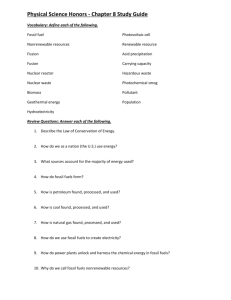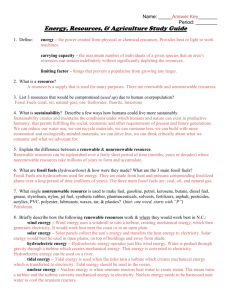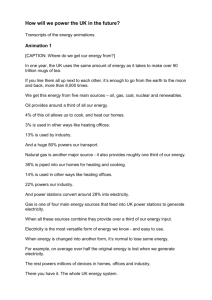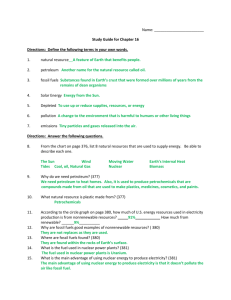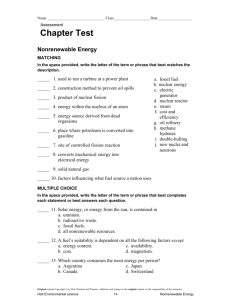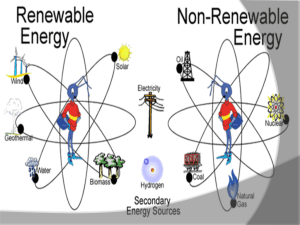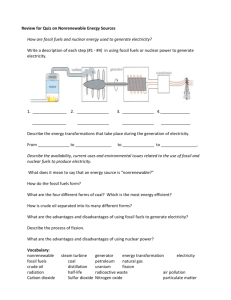C.17 Word Study - Nonrenewable Energy
advertisement
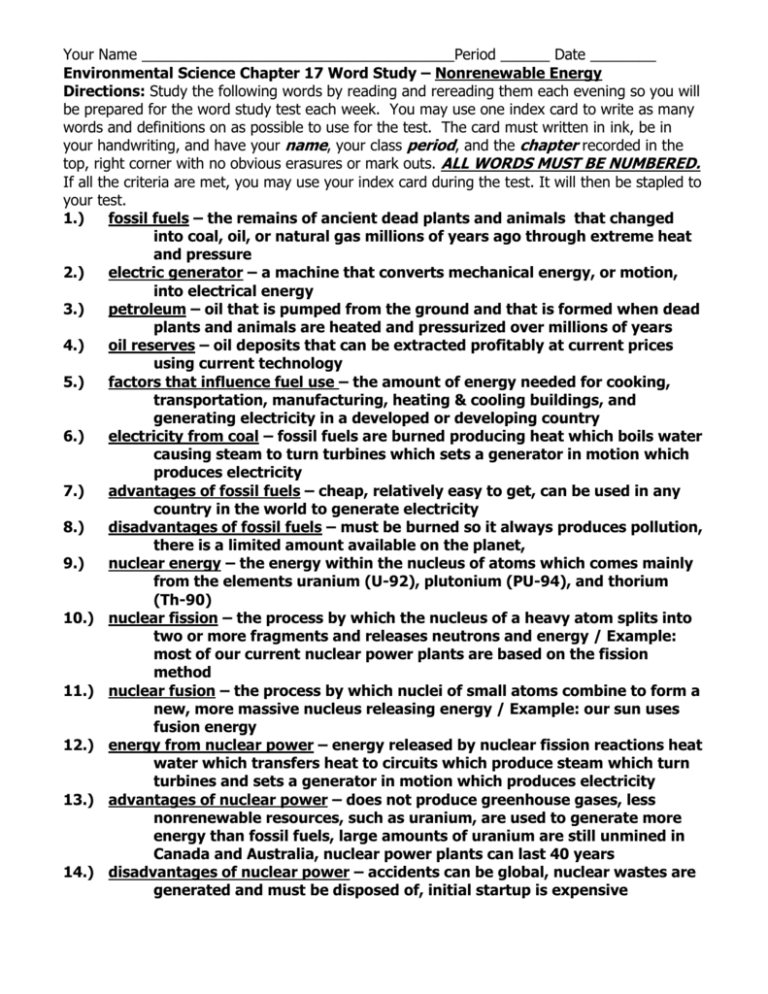
Your Name ______________________________________Period ______ Date ________ Environmental Science Chapter 17 Word Study – Nonrenewable Energy Directions: Study the following words by reading and rereading them each evening so you will be prepared for the word study test each week. You may use one index card to write as many words and definitions on as possible to use for the test. The card must written in ink, be in your handwriting, and have your name, your class period, and the chapter recorded in the top, right corner with no obvious erasures or mark outs. ALL WORDS MUST BE NUMBERED. If all the criteria are met, you may use your index card during the test. It will then be stapled to your test. 1.) fossil fuels – the remains of ancient dead plants and animals that changed into coal, oil, or natural gas millions of years ago through extreme heat and pressure 2.) electric generator – a machine that converts mechanical energy, or motion, into electrical energy 3.) petroleum – oil that is pumped from the ground and that is formed when dead plants and animals are heated and pressurized over millions of years 4.) oil reserves – oil deposits that can be extracted profitably at current prices using current technology 5.) factors that influence fuel use – the amount of energy needed for cooking, transportation, manufacturing, heating & cooling buildings, and generating electricity in a developed or developing country 6.) electricity from coal – fossil fuels are burned producing heat which boils water causing steam to turn turbines which sets a generator in motion which produces electricity 7.) advantages of fossil fuels – cheap, relatively easy to get, can be used in any country in the world to generate electricity 8.) disadvantages of fossil fuels – must be burned so it always produces pollution, there is a limited amount available on the planet, 9.) nuclear energy – the energy within the nucleus of atoms which comes mainly from the elements uranium (U-92), plutonium (PU-94), and thorium (Th-90) 10.) nuclear fission – the process by which the nucleus of a heavy atom splits into two or more fragments and releases neutrons and energy / Example: most of our current nuclear power plants are based on the fission method 11.) nuclear fusion – the process by which nuclei of small atoms combine to form a new, more massive nucleus releasing energy / Example: our sun uses fusion energy 12.) energy from nuclear power – energy released by nuclear fission reactions heat water which transfers heat to circuits which produce steam which turn turbines and sets a generator in motion which produces electricity 13.) advantages of nuclear power – does not produce greenhouse gases, less nonrenewable resources, such as uranium, are used to generate more energy than fossil fuels, large amounts of uranium are still unmined in Canada and Australia, nuclear power plants can last 40 years 14.) disadvantages of nuclear power – accidents can be global, nuclear wastes are generated and must be disposed of, initial startup is expensive

